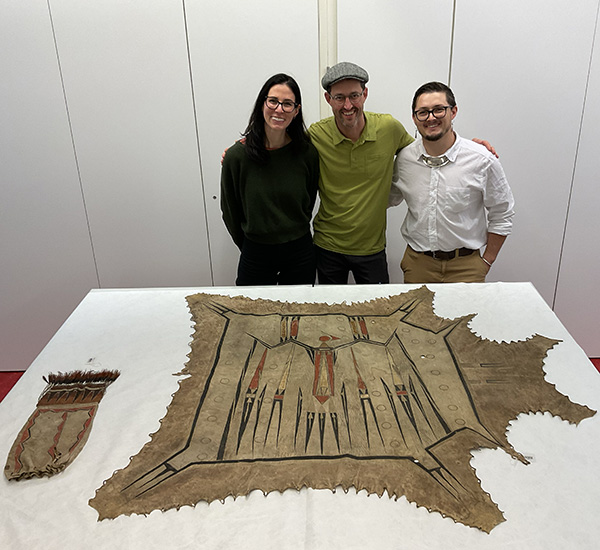Myaamia Center collaborates on historic Native American exhibition at Palace of Versailles in France
George Ironstrack has served as a consultant on the exhibition, which opens Nov. 23
Myaamia Center collaborates on historic Native American exhibition at Palace of Versailles in France

The Myaamia Center at Miami University is playing a key role in a new historic exhibition at the Palace of Versailles in France that features painted hide robes created more than 300 years ago by Native American communities.
George Ironstrack, assistant director of the Myaamia Center and a citizen of the Miami Tribe of Oklahoma, has served as a consultant to the exhibition, which opens on Nov. 23.
“I’ve been looking at pictures of these minohsayaki ‘painted hide robes’ since I was a teenager,” Ironstrack said. “At that time, it would have seemed like a wild dream that I would have the opportunity to visit with these awe-inspiring works of ancestral art in person, much less help curate their exhibition at Versailles.”
The exhibition, which runs through May 3, 2026, coincides with the 300th anniversary of a 1725 diplomatic visit to France by several Native American chiefs. The exhibition is the result of a partnership with the Musée du quai Branly-Jacques Chirac in Paris and will display some of the most famous, existing 18th century hide paintings, including a robe with an iconic thunderbird image.

Ironstrack’s participation stems from the “Reclaiming Stories: “(Re)connecting Indigenous Painted Hides to Communities through Collaborative Conversations” project.
This multi-year collaboration, funded by Humanities Without Walls and the Mellon Foundation, is led by the University of Illinois Urbana-Champaign and includes partners from the Miami Tribe of Oklahoma and the Peoria Tribe of Indians of Oklahoma.
Ironstrack — along with other project collaborators and tribal citizens from both communities — will travel to France to attend the exhibition opening.
The trip also will include a visit to the Palace of Fontainebleu to commemorate the 1725 delegation of chiefs, who met with King Louis XV on Nov. 25 of that year. While Myaamia leaders were not among the participants in the 1725 trip, the communities represented shared land and kinship ties with the Myaamia.
The project focuses on four minohsayaki held in the Paris museum’s collection. While these specific robes were created by ancestors of the peewaalia ‘Peoria,’ the Miami Tribe has been a dedicated partner in the research due to the deep, historical ties between the two Nations.
They share language, kinship, and have a long history of intermarriage. The robes provide a meaningful entry point into the artistic designs and processes that the Myaamia community would have shared.
The “Reclaiming Stories” project has supported multiple research trips to Paris, as well as summer workshops for tribal members on the traditions of hide paining, tanning, and tattooing.
Established in 1809, Miami University is located in Oxford, Ohio, with regional campuses in Hamilton and Middletown, a learning center in West Chester, and a European study center in Luxembourg. Interested in learning more about the Myaamia Center? Visit the website for more information.